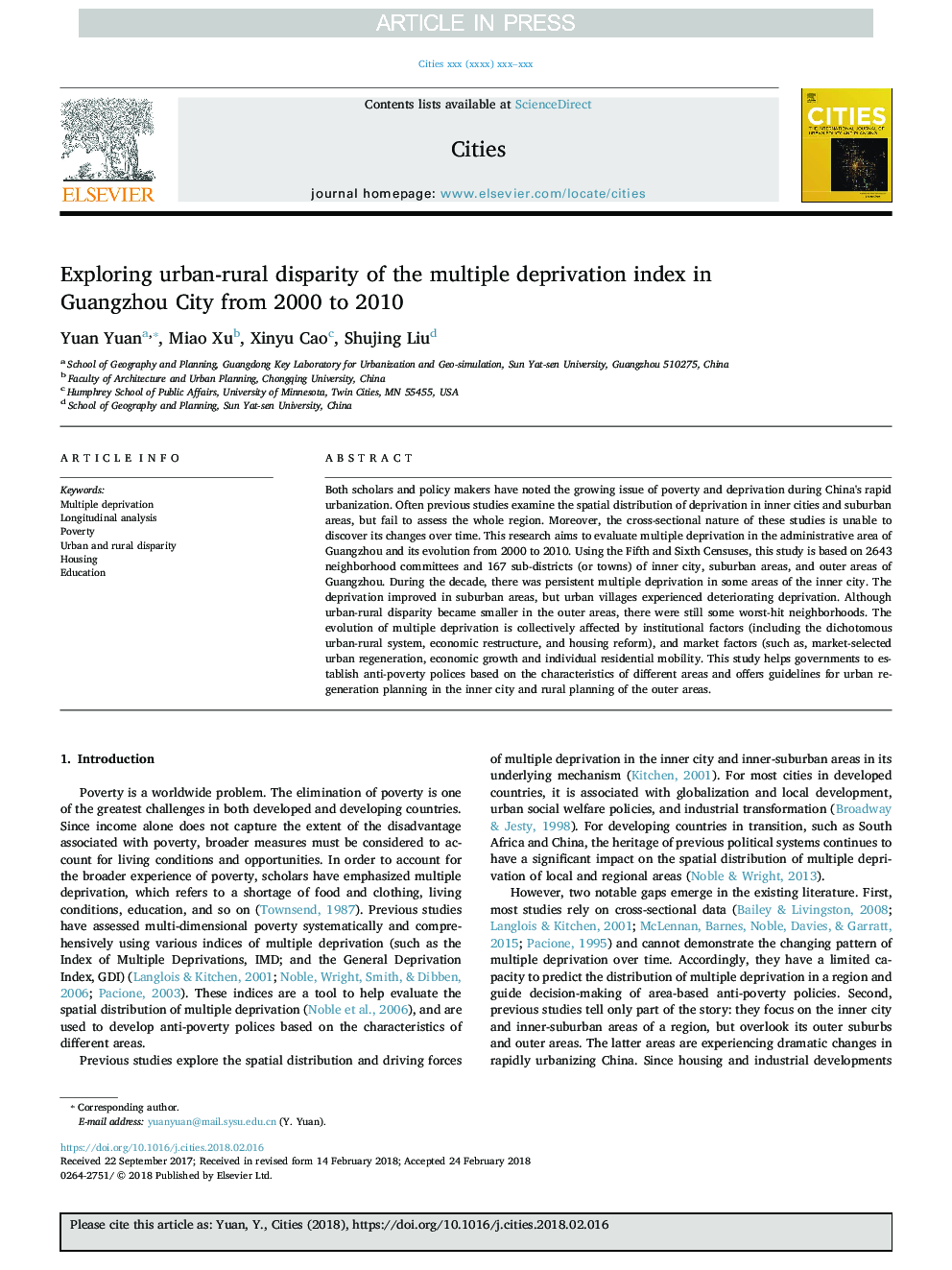| Article ID | Journal | Published Year | Pages | File Type |
|---|---|---|---|---|
| 7417051 | Cities | 2018 | 11 Pages |
Abstract
Both scholars and policy makers have noted the growing issue of poverty and deprivation during China's rapid urbanization. Often previous studies examine the spatial distribution of deprivation in inner cities and suburban areas, but fail to assess the whole region. Moreover, the cross-sectional nature of these studies is unable to discover its changes over time. This research aims to evaluate multiple deprivation in the administrative area of Guangzhou and its evolution from 2000 to 2010. Using the Fifth and Sixth Censuses, this study is based on 2643 neighborhood committees and 167 sub-districts (or towns) of inner city, suburban areas, and outer areas of Guangzhou. During the decade, there was persistent multiple deprivation in some areas of the inner city. The deprivation improved in suburban areas, but urban villages experienced deteriorating deprivation. Although urban-rural disparity became smaller in the outer areas, there were still some worst-hit neighborhoods. The evolution of multiple deprivation is collectively affected by institutional factors (including the dichotomous urban-rural system, economic restructure, and housing reform), and market factors (such as, market-selected urban regeneration, economic growth and individual residential mobility. This study helps governments to establish anti-poverty polices based on the characteristics of different areas and offers guidelines for urban regeneration planning in the inner city and rural planning of the outer areas.
Related Topics
Social Sciences and Humanities
Business, Management and Accounting
Tourism, Leisure and Hospitality Management
Authors
Yuan Yuan, Miao Xu, Xinyu Cao, Shujing Liu,
